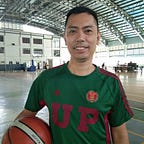Chronicles of a Research Assistant
by Oliver Carlos
Before I became a teacher, I was a research assistant. That was my very first job. The year was 1993. I worked for my alma mater, the UPLB College of Human Ecology for more than a year, travelling and interviewing people about their lives and aspirations. My boss was the late Prof. Thelma Sto. Domingo, and the title of our research project was “Quality of Life Indicators.” We wanted to find out the people’s idea of “the good life”- is it having a large house, a cool car, lots of money, or something else?
My job brought me to 4 research sites- Pagbilao in Quezon province, Naic and GMA in Cavite, and Calamba, Laguna. I stayed in each place for about a month, observing community life and chatting with folks. Pagbilao represented the upland farmers, Naic the fisherfolks, Calamba the factory workers, and GMA the settlers of a relocation site.
My first stop was Pagbilao. The DENR nursery deep in the Sierra Madre mountains became my home base. The community I studied had very few people and who lived in houses that were several kilometers apart. They lived in simple wooden houses that were on stilts. Each house is just a single chamber no more than 20 square meters in floor area. They didn’t have electricity and running water in the house. The folks get their drinking water from springs and from a creek with crystal-clear waters. I loved the place for its serenity and pristine state. I find the people very hospitable. In every household I visited, I was served with their locale’s delicacy, nilupak, which I believe is from a root crop. I also observed that they put coconut milk in every viand.
Next stop was a coastal barangay in Naic, Cavite. A very big issue during that time was dynamite fishing. The people whom I interacted with didn’t practice it, in fact they were furious with some people living in the next barangay who resort to that illegal method. In Naic, I learned their terminology for the fish that were caught using dynamites, they called them isdang putok. They also taught me how to spot an isadang putok. Just look at the fish’s belly. If it’s shredded, the fish died because of an underwater explosion.
After a month, I lived GMA, Cavite. As a history buff, I find the place interesting. GMA stands for General Mariano Alvarez, a Katipunero who led battles in Cavite against the Spaniards during the Philippine Revolution. Curiously, the names of the barangays of the municipality were the names of the 30 soldiers of Gen. Alvarez. There’s just one barangay that is not so, it’s named after a saint. It’s located at the farthest end of the town. There’s a vast corn field there and that’s where I got to interview some folks. Their specialty of the house was the lechong mais. It’s a corn cob on a stick that is directly laid on a bonfire.
My last stop was a community outside a big factory in upland Calamba. Almost everybody in that place was a factory worker. They were actually transients renting very small-and-stuffy apartments. They’re pretty much crowded in those units, and in most cases, they’re not related to one another. In some households, there were 2 shifts of dwellers. One set of people works in the morning, while the other set sleeps in their house. Then they would exchange roles at nighttime.
I never got to finish writing the final report of that research project as I jumped boat in June 1994. I got an opportunity to teach in another college, and that started my very long teaching career that now spans 4 decades, and still counting. I’ve been a teacher in the 1990s, 2000s, 2010s, and now in the 2020s. On hindsight, I’m thankful I got to work that research assistant job once upon a time. I became better prepared as a Social Sciences teacher. It made me see and experience the real world, meet people and communities toiling hard to get the “good life.”
I never saw the result or final report of our study, what the people’s picture of the ideal life is, but the Bible tells us the key to having it. It’s by establishing an intimate personal relationship with Jesus. Here are Jesus’ words in John 10:10,15 (GNT):
“I have come in order that you might have life — life in all its fullness…I am the good shepherd…I know my sheep and they know me. And I am willing to die for them.”
There are several good news that we can extract from this passage. Foremost is that Jesus has the ability to give us eternal life as well as the highest possible quality of earthly life. Next, he is very willing to give these to us. But first we have to belong to him, we have to be like sheep to him, the Good Shepherd. Do you want to receive the fullness of life? Come to Jesus in prayer and say “Lord, from now on I will follow you.”
